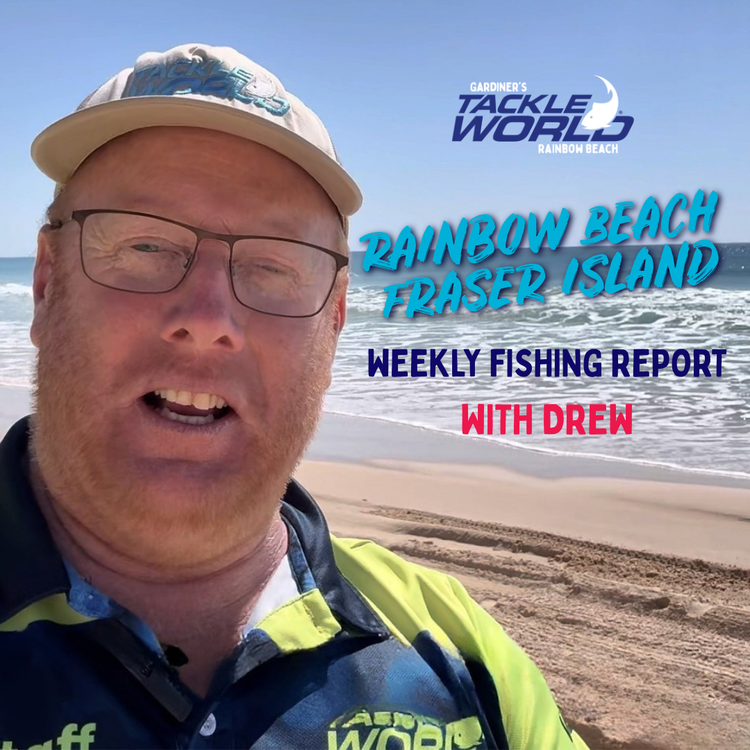Line Diameter vs Breaking Strain
G'day fishing legends! I’ve escaped the shop for the week and snuck off to beautiful Fraser Island, staying at a little gem called The Hideaway. It’s absolutely unreal, and I highly recommend checking it out if you’re planning on coming this way. While I’m here, I thought I’d share some tips on beach fishing, especially when it comes to landing those prized whiting. They’ve been biting like crazy right in front of where we’re staying, and I want to help you make the most of your time out on the water.
Here’s what I’ve learned over the years about line selection, fishing conditions, and why diameter—not poundage—is the ultimate game-changer for beach fishing.
Perfect Conditions for Whiting at Fraser Island
Fraser Island is a fishing paradise, and the drains right out front of The Hideaway are producing some fantastic whiting at the moment. While it’s currently high tide, the real action has been happening closer to low tide. We’ve been landing some beauties with every session when the tide’s down and the conditions are calm. Oh, and the swell’s starting to drop too, which is always a bonus for casting those perfect lines.
If you’re around, I definitely suggest giving these drains a go!
The Line Debate: It’s All About Diameter, Not Poundage
One thing I notice a lot when people pop into our tackle shop is the confusion around line selection. Most people only focus on the poundage, saying, “I need a 6-pound line” or “I want a 10-pound line.” But here’s the truth: poundage isn’t the most important thing about your line. The key is diameter.
Here’s why diameter matters so much:
- Longer Casting Distance: Thinner line means you can cast further and more accurately. Perfect for hitting those deeper gutters or drains right off the beach!
- Less Impact From Sweep: Thicker lines get picked up by the swell or sweep, dragging your rig around and making it harder to keep your bait where it needs to be. A thinner line cuts through the sweep like a dream.
- Stealthier Presentation: Fish like whiting aren’t worried about the breaking strain of your line, but they can detect thicker, more visible lines. Thinner line means a subtler, more natural presentation.
My Line Recommendation
For beach fishing, especially whiting, I use a 15-pound line with the same diameter as a lighter 6-pound line from other brands. Yep, you heard that right. When I tell people this, their jaws usually hit the floor. But trust me, fish aren’t out there measuring your line’s breaking strain. What they notice is the thickness, and that’s where thinner, high-quality lines shine.
Pro tip: When you’re at your favourite tackle shop, take a close look at the packaging. Compare the diameters of different brands and pick the thinnest option for the highest breaking strain. This approach has been a game-changer for so many of our customers at Tackle World Rainbow Beach. They often come back raving about how much they love the improved performance.
The Gear I’m Loving Right Now
When it comes to casting into the surf, the line I personally swear by is super thin, silky smooth, and incredibly strong. It helps me land fish without worrying about losing casting distance or dealing with annoying sweep. My go to line has always been the Sufix Duraflex Mono 300m but I have just recently converted to the Instinct Ultra Max Terpolymer Mono 300m. This new line is the closest you can get to an invisible line that isn’t a fluro carbo line.
Honestly, I can’t recommend it enough. If you’d like to know exactly what I’m using, drop by the shop or shoot us a message—I’d be happy to help you out!
Tight Lines and Happy Fishing!
Alright, fishing legends, the coffee’s almost gone, and it’s time for me to gear up for another great day on the beach. Whether you’re casting off Fraser Island or trying your luck back home, keep these tips in mind next time you’re out chasing whiting or enjoying a session by the surf.


